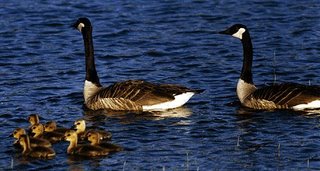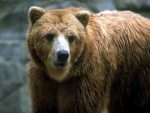Sunday, July 02, 2006
Here's more
Anything that helps an organism survive in its environment is an adaptation. It also refers to the ability of living things to adjust to different conditions within their environments.
Structural Adaptations.
Involves some part of an animal's body, such as the size or shape of the teeth, the animal's body covering, or the way the animal moves.
 Teeth - since different animals eat different things, they don't all have the same kind of teeth
Teeth - since different animals eat different things, they don't all have the same kind of teethBody coverings - Hair, scales, spines, and feathers grow from the skin. All of these parts help animals survive in their environments.
Movement - animals find food by moving from place to place

Camouflage.
Protective coloration and protective resemblance allow an animal to blend into its environment. Their camouflage makes it hard for enemies to single out individuals.
Mimicry
Allows one animal to look, sound, or act like another animal to fool predators into thinking it is poisonous or dangerous.
Behaviour Adaptations
Include activities that help an animal survive. Behavior adaptations can be learned or instinctive. (a behaviour an animal is born with).
Social behavior - some animals live by themselves, while other live in groups.
Behaviour for protection - An animal's behavior sometimes helps to protect the animal. For instance the opossum plays dead. A rabbit freezes when it thinks it has been seen.
 Migration-is the behavioral adaptation that involves an animal or group of animals moving from one region to another and then back again.
Migration-is the behavioral adaptation that involves an animal or group of animals moving from one region to another and then back again.Animals migrate for different reasons. The reasons are as follows.
-better climate
-better food
-safe place to live
-safe place to raise young
-go back to the place they were born.
 Hibernation
HibernationA deep sleep in which an animal's body temperature drops to about the temperature of the environment. Body activities, such as heartbeat and breathing are slowed causing the animal to need very little food.
Animals that hibernate are bats,woodchucks,snakes,bears.
During the hibernation the animals live off of the fat that is stored in their body.
